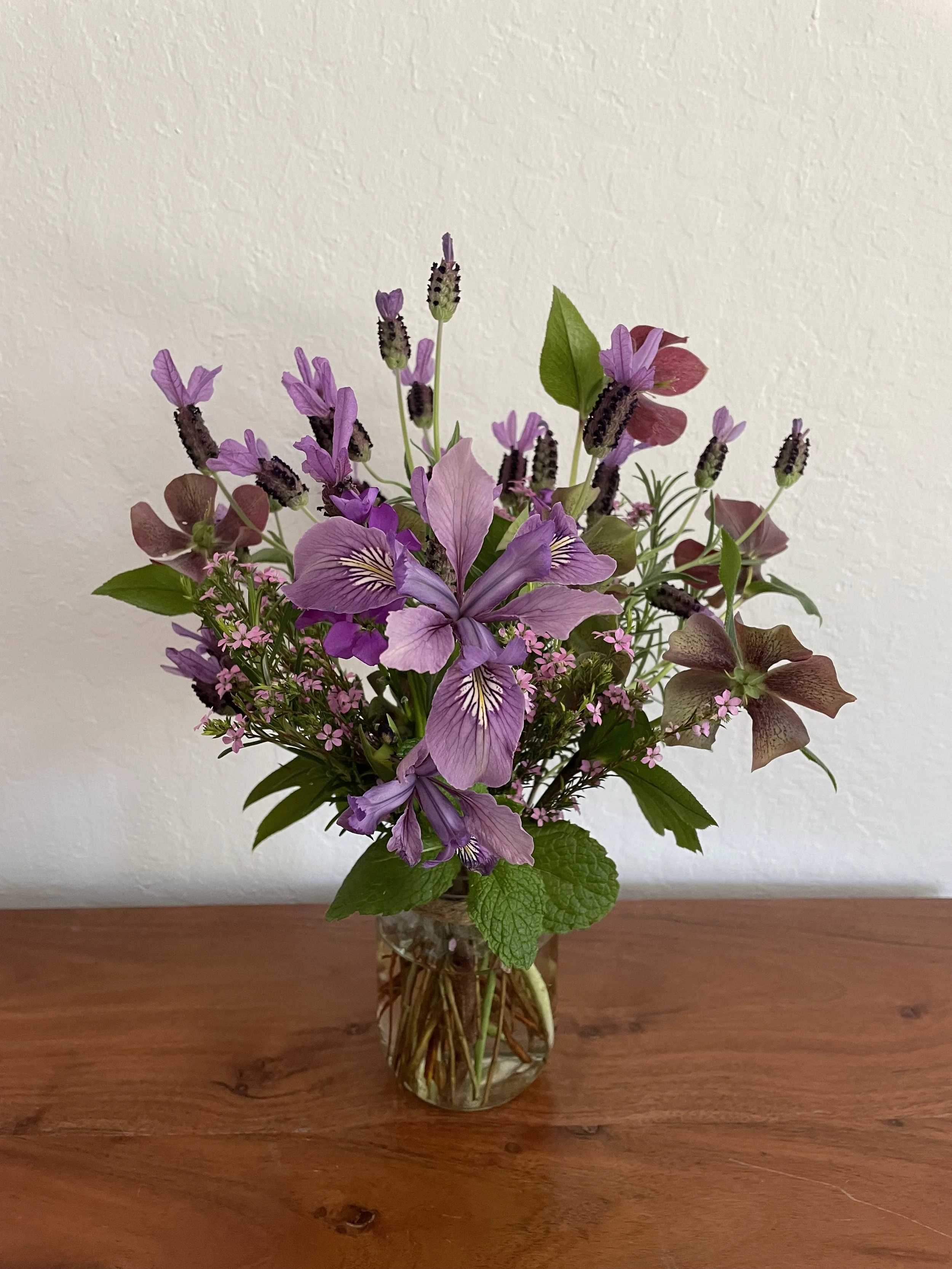Flower of the month: Douglas iris
Each month I highlight a specific flower in season and how it can be used in floral design. This month is a California native perennial, the Douglas iris.
Douglas iris (Iris douglasiana)
This wildflower is common in coastal regions from central California to southern Oregon. It blooms around April and comes back again each year as a perennial.
The striped petals are particularly striking (and distinguish it from the more common iris), and the flowers come in various shades of purple, yellow, and white.
One interesting thing is that Douglas irises have double blooms; each stem contains multiple flowers. From my own experiments, if you cut the Douglas iris as the first flower is blooming, that flower will eventually fade and another one will emerge to replace it. The second flower is smaller when the iris has been cut, but appears normal-sized when left on the plant.
Can Douglas iris be used in floral design? Absolutely.
Douglas iris in a spring meadow inspired floral arrangement
Remember when designing with native flowers, it’s essential to harvest responsibly from your own garden. Please respect the ecosystem (and the pollinators) and do not forage on public lands.
Even though the Douglas iris appears as a focal flower in this arrangement, the flower itself is not particularly large. To stay true to the wildflower look, I didn’t want to choose flowers that would dwarf the iris. Instead, I chose smaller flowers and aromatic herbs to create a wild meadow look.
The Spanish lavender waving in the background offers a playful touch while the red-violet tones of the hellebore helps transition between the purple flowers and the pink breath of heaven.
Breath of heaven (Coleonema pulchellum) is native to South Africa and does well as a drought tolerant plant growing in California. I’ve struggled using this in floral design before, because in past arrangements I’ve spread it throughout the bouquet as a generalized filler. Since the flowers are tiny and appear at different heights, putting a branch here and a branch there made those past arrangements look chaotic and untidy. Clustering multiple branches together appears more intentional, and it also mimics the natural way the shrub grows.
This bouquet is aromatic with the lavender, rosemary, mint, and some single-bloom purple stock that came back from what I planted last year.
Douglas iris has a shorter vase life than most flowers (~3 days), but the double blooms extend the flowering time. Once the first flower has expired, simply cut it off and wait for the next one to bloom.
__________________

